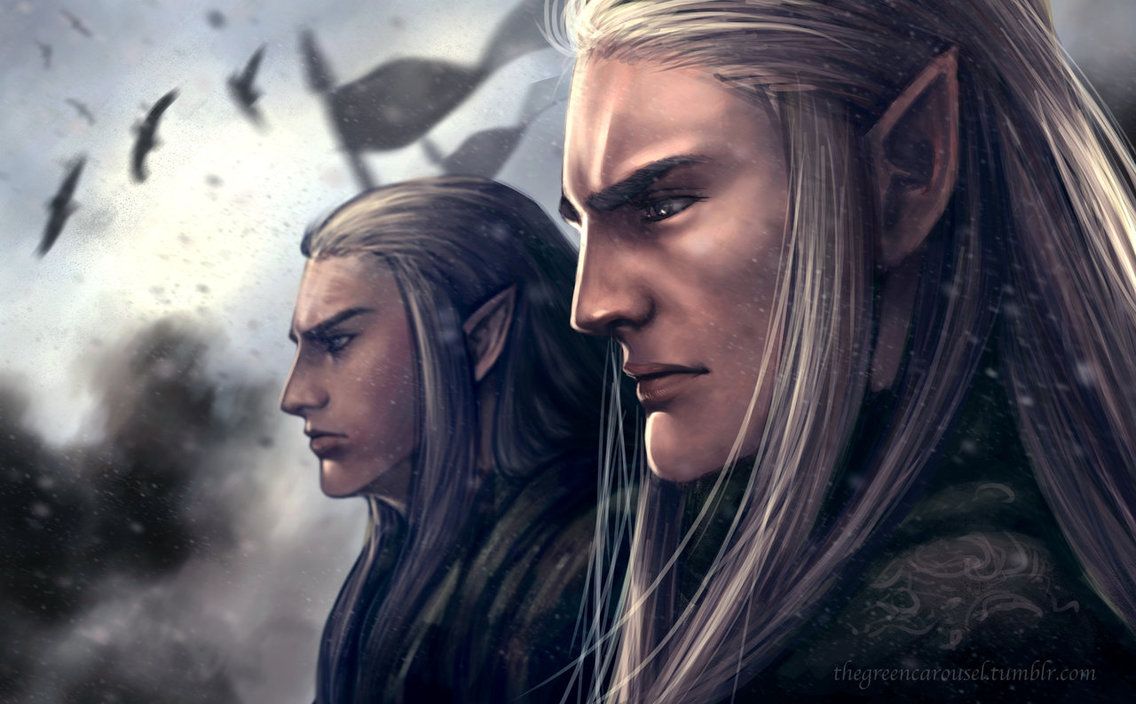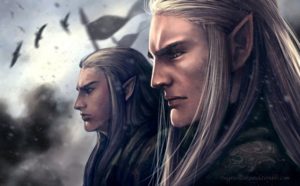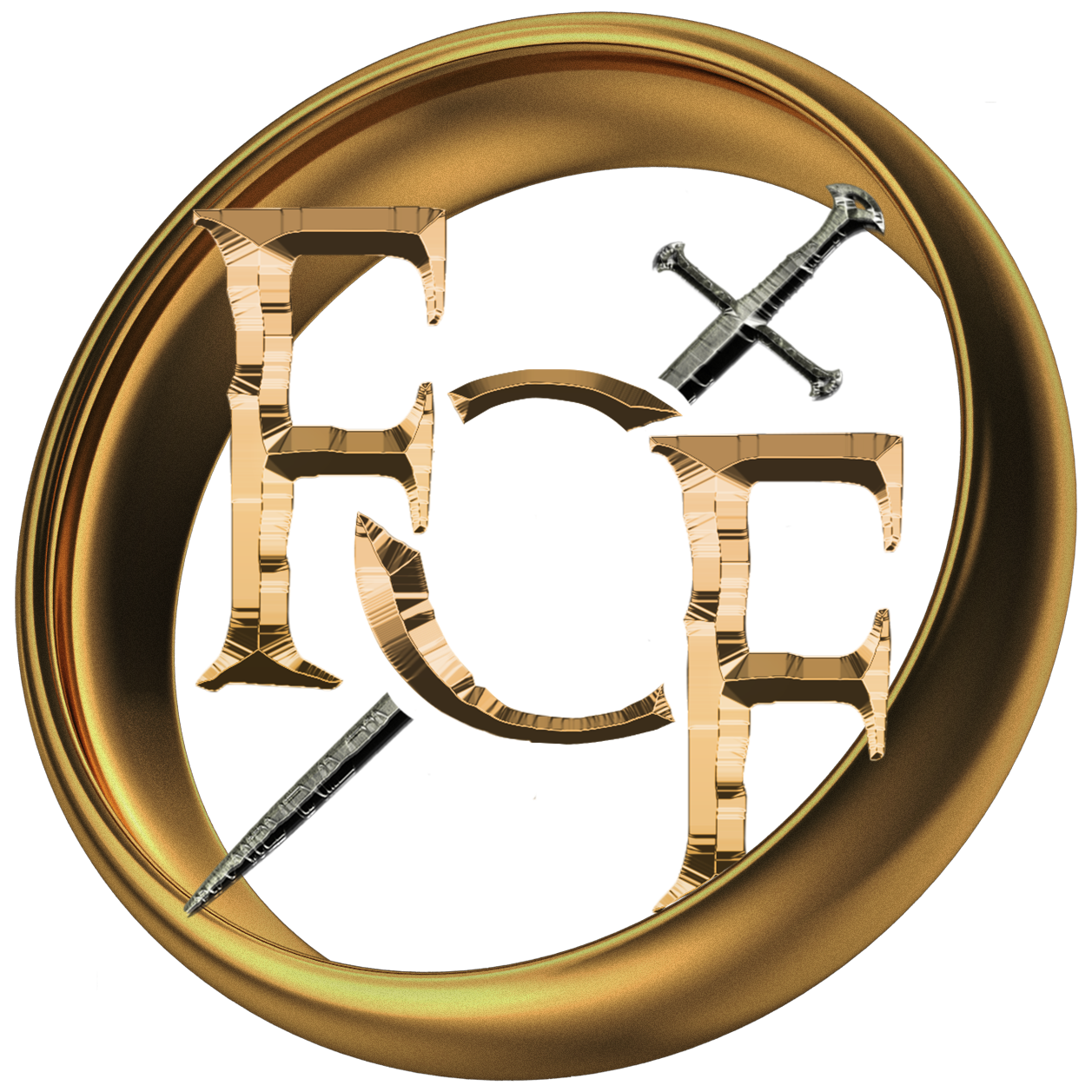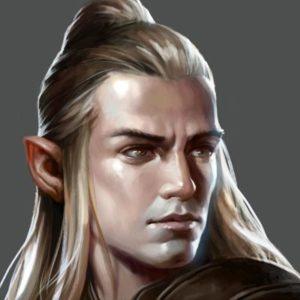
Of Oropher and Amdir: The Sindarin Kings
When you read Tolkien’s Legendarium for the first time and come across the deep lore that surrounds the Elves, you may accidentally skim past two of Middle-earth’s notoriously lesser-known Elven kings: Oropher of the Greenwood and Amdir of Lorinand. These two Elven kings were alive during the Second Age of Middle-earth and most of what Tolkien had to say about them occurred doing this time. Unlike Gil-galad, Galadriel, or Celeborn, Oropher and Amdir did not belong to the Noldor or Teleri houses of the Elves but to the Sindarin house instead. The Sindar were a unique clan of Elves that housed some of Tolkien’s most distinctive and individualistic Elves of Middle-earth – and Oropher and Amdir were no exception. Tolkien said this regarding the Sindarin Elves: “Although they were Moriquendi, under the lordship of Thingol and the teaching of Melian, they became the fairest and the most wise and skillful of all the Elves of Middle-earth.”
Amdir, King of Lorinand
As for Oropher and Amdir, their mutual disdain for the Noldor would lead them to settle in regions east of the Misty Mountains and far from the Elves of Lindon and Eregion. For Amdir, he was the first king of Lorinand (later known as Lothlorien), and his people were that of the Galadhrim. Unlike Gil-galad and Celebrimbor, Amdir’s land and people were not seen as magnificent or grand in regards to size and lineage. The Galadhrim were not many, and their origins were that of Silvan Elves – not Noldor nor Teleri nor Sindarin. The army Amdir took to the Battle of Dagorlad (more on that shortly) was said to have been small and ill-equipped compared to Gil-galad’s Noldor army. The region of Lorinand itself was like that of a piece of lent on a map compared to the sheer size of Lindon or even Eregion for that matter. But unlike Eregion, Lorinand would actually see the Third Age – just under a different name. And that brings me to why I find Amdir and his people so fascinating. They might not have been imposing or plentiful by any means but they were still unique and different compared to the Elves that we’re used to reading about. They were the “every-man” Elves who didn’t see themselves as being higher than everyone else, even though they were still indeed Elves.
Oropher, King of Amon Lanc
Now, let’s talk about Oropher, a character who is a bit more complex than your average Elven king. Think of Thranduil, Oropher’s son, but dialed to eleven. He was an outsider, but that’s not what made him unique. What made him unique was that he chose to take that path of being an outsider without being made to by someone else. Not only was he an outsider amongst the other clans of Elves, but to his own clan as well. Instead of being a leader of the Sindar, he would lead the Silvan Elves to new homes in the Rhovanion and lead them to new lives and new heights.
Of the Silvan Elves
The Silvan Elves weren’t highly regarded amongst the major Elven clans of Middle-earth, they were seen as lesser Elves and almost like the strays and mutts of the pack. They never even had a land to call their own until Oropher gave them one in the Second Age. For the most part, they were mostly always scattered and leaderless and were never given the opportunity to show their quality. That was until Oropher came along and gave them that chance to make a name for themselves – and they did. Under Oropher, and then his son Thranduil, the Silvan Elves would become known as the Wood-elves in the deep forests of the Rhovanion. As for Oropher, the Silvan Elves would become his people and he would become their king. A Sindarin Elf who wanted no part in the greater politics of the Elves and his own clan would find himself becoming king of people just like him – outsiders.
The Many Travels of the Greenwood King
Oropher’s ventures as the king of the Silvan Elves would be eventful. During the beginning of his reign, the Sindarin King would rule his kingdom in the southern parts of the Rhovanion, in a fortress called Amon Lanc. Amon Lanc was unique as it was perched on a great hill that lay between the vast forests of the Rhovanion. Oropher and his people would not stay here long, though, for the encroachment of Celeborn and Galadriel from the Misty Mountains to Lorinand would drive him up the Greenwood and away from the people he wanted separation from in the first place. Fun fact: After the passage of time and well into the Third Age, Sauron (disguised as the Necromancer) would take up occupancy in the long-decayed Amon Lanc – now referred to as Dol Guldur. Oropher would move his people north a total of three times throughout his reign as king, giving show as to why he was seen as such a hasty fellow during his time. When he first felt the growing darkness of Sauron encroaching upon the lands of the Rhovanion, he would settle his people in Emyn Duir, the Mountains of Mirkwood, and there most of them would remain until the very end of the Third Age.
The End of Oropher, Amdir, and the Second Age

After feeling the dread of Sauron’s approaching evil, Oropher prepared for the worst. He knew he would have to put an end to his bitter rivalry with the Noldor in order to secure a future for his kingdom, and so he did. He, along with Amdir joined forces with High King Gil-galad and King Elendil in the War of the Last Alliance. The two Sindarin kings would fight side-by-side with the armies they each brought from their respective kingdoms. During the first assault upon Mordor, Oropher rushed forward his large army of Silvan Elves before Gil-galad could give the signal to advance. The Silvan Elves were brave and valiant but ill-equipped, and that would prove fatal for them as two-thirds of the army would be killed, including Oropher himself. Amdir would meet a similar fate in the same battle, as his small army was cut off from Gil-galad’s host of Elves and thus driven into the Dead Marshes and slaughtered. Both Oropher and Amdir would leave behind their sons, Thranduil and Amroth, to rule their respective kingdoms. Amroth would rule as king of Lorien until his death in 1981 of the Third Age. Thranduil stayed king of the Woodland Realm until the Fourth Age, and he presumably sailed west thereafter. As for Oropher and Amdir, their mere existence seeks to challenge our perspective of what an Elf is and what they should act like. These two Sindarin kings are unlike most of Tolkien’s Elves and it is a crying shame that we only know so little about them. The little we do know about them, however, is intriguing and I hope they get the respect they deserve in the upcoming Second Age show: The Lord of the Rings: The Rings of Power.








No Comments